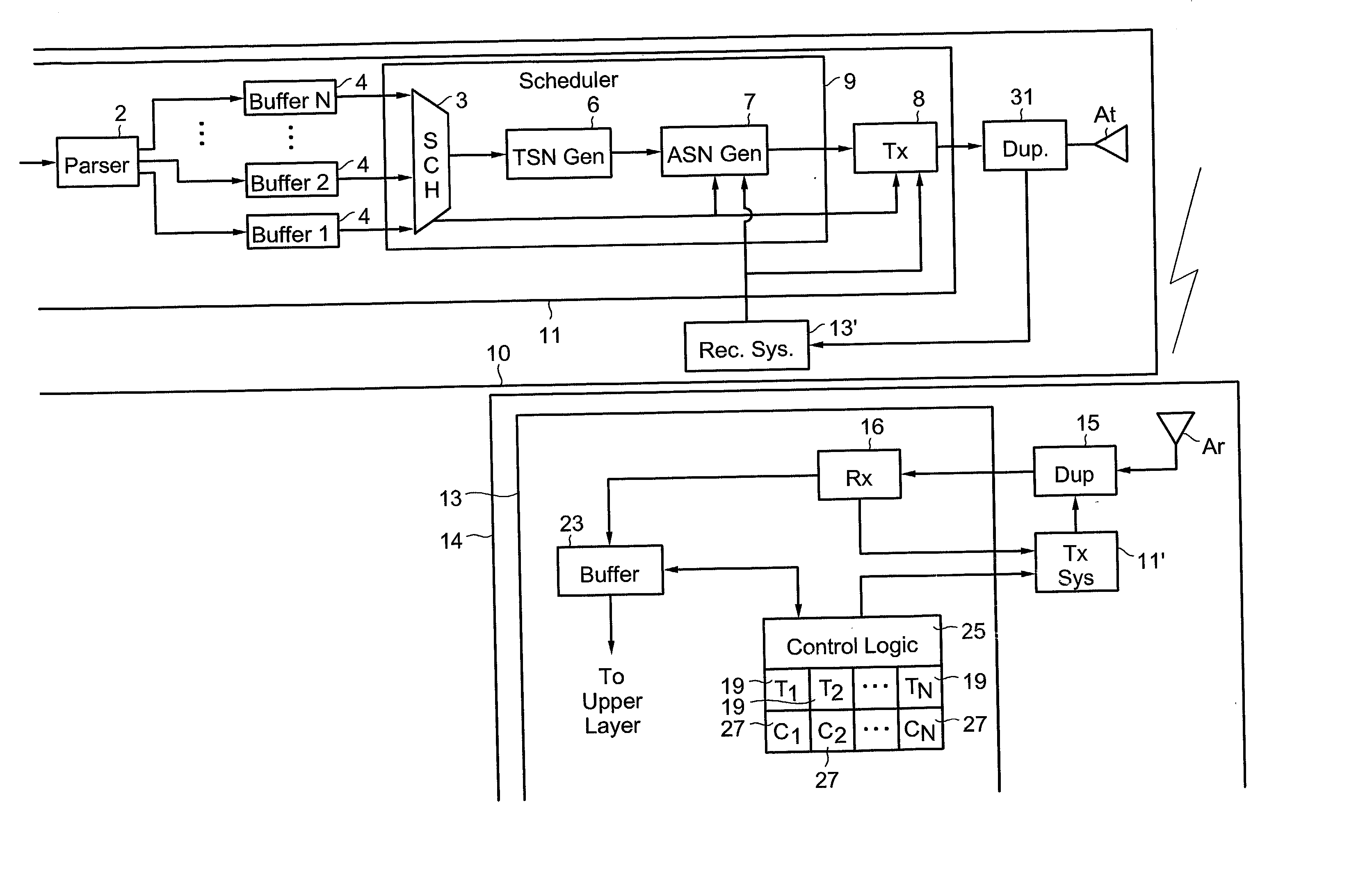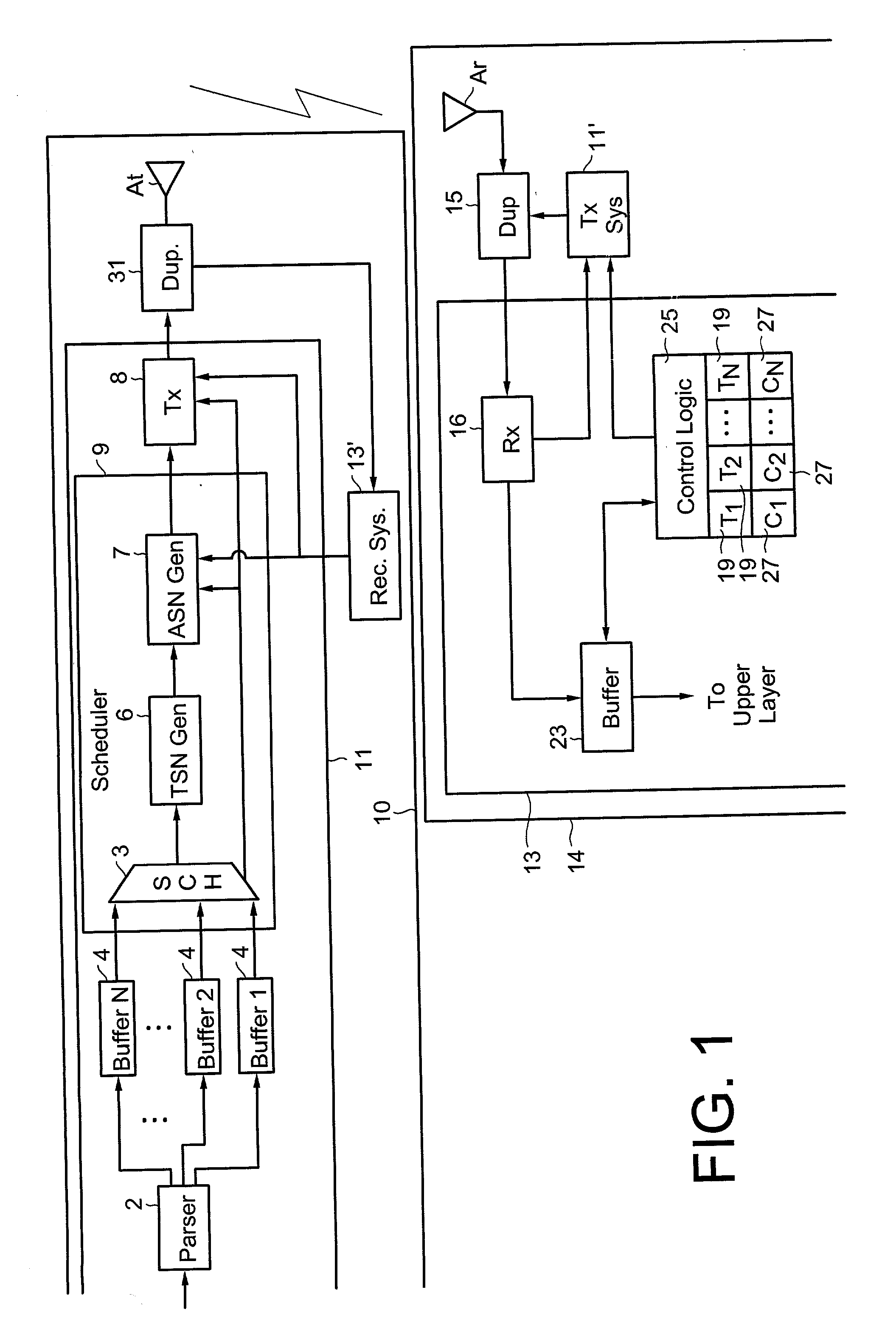Method and apparatus for transmitting and receiving data packets to avoid stall during re-sequencing of data packets
a data packet and data transmission technology, applied in the field of next-generation wireless communication, can solve the problems of transmission error, user equipment does not necessarily receive data packets in the same order, and compounded out-of-sequence problems
- Summary
- Abstract
- Description
- Claims
- Application Information
AI Technical Summary
Benefits of technology
Problems solved by technology
Method used
Image
Examples
Embodiment Construction
[0013] FIG. 1 illustrates a logical block diagram of a transmit and receive system employing stall avoidance methodologies embodiment of the present invention. As shown, a source device (e.g., a base station) 10 transmits data packets over a medium 12 to a destination device (e.g., user equipment) 14. Hereinafter, the source device 10 will be referred to as base station 10 and the destination device 14 will be referred to as the user equipment 14, but it will be understood that the user equipment could be the source device and the base station the destination device.
[0014] The base station 10 includes a parser 2 that receives data packets for transmission from other base station circuitry, not shown for the sake of brevity and clarity. The data packets represent one or more logical channels, and have been assigned a priority class. Specifically, each data packet includes a priority class indicator (PCI) indicating the priority class (1 through N) of the data packet. In one embodimen...
PUM
 Login to View More
Login to View More Abstract
Description
Claims
Application Information
 Login to View More
Login to View More - R&D
- Intellectual Property
- Life Sciences
- Materials
- Tech Scout
- Unparalleled Data Quality
- Higher Quality Content
- 60% Fewer Hallucinations
Browse by: Latest US Patents, China's latest patents, Technical Efficacy Thesaurus, Application Domain, Technology Topic, Popular Technical Reports.
© 2025 PatSnap. All rights reserved.Legal|Privacy policy|Modern Slavery Act Transparency Statement|Sitemap|About US| Contact US: help@patsnap.com


